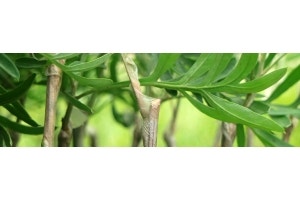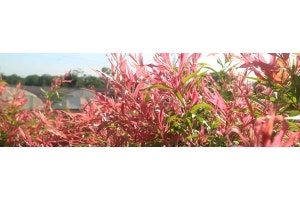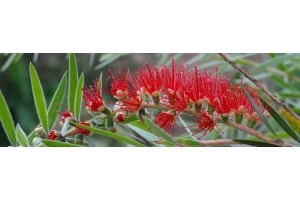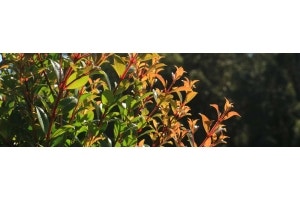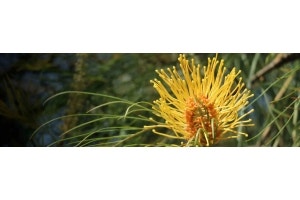
One of the most popular questions we get asked is, "What's the fastest-growing hedge?"The fastest-growing screening plants are climbers. If you want a really speedy solution to cover an eyesore, block out the neighbours, create almost-instant shade - then climbers are your perfect plants. If you want something more traditional, something less maintenance-heavy, or something that you can clip into a tidy shape, then here are some of our favourite fast-growing plants for hedging in a hurry.
Depending on your climate they may lose their leaves, or die back completely to the roots, ready to regrow when the temperature warms up.
In mild climates, they can carry on growing, or at least stay as they are. Because herbaceous perennial plants do all their living in a relatively short time, they have to grow up fast, which makes them a useful solution if you want a quick boundary edge.

Important to consider if you have a busy schedule, or a lot of hedge...!

Herbaceous Perennials
Herbaceous perennials, often used for mixed bedding and garden borders, can also make useful and attractive hedging plants too, especially in a cottage-style garden.The term means a herb-plant (not a tree or shrub) that lasts a long time (not an annual).Herbaceous perennials generally live for at least three years, often longer; and have a dormant period in cold weather.Depending on your climate they may lose their leaves, or die back completely to the roots, ready to regrow when the temperature warms up.
In mild climates, they can carry on growing, or at least stay as they are. Because herbaceous perennial plants do all their living in a relatively short time, they have to grow up fast, which makes them a useful solution if you want a quick boundary edge.

Here's some of our favourite herbaceous perennials
These will give you flowers, as well as a soft lush leafy border to your garden :
Woody Perennials
Some perennials, left to grow and not cut back hard each year, will develop a woody base to the stems as they mature; and turn into shrubs. This means they can be grown as a permanent informal hedge. Some may lose leaves in cold weather, but the branch and twig structure will remain in place as a barrier.Annual hard pruning will encourage bushy dense growth, to help the plants form close hedges. In some cases a light clip each season will be needed too.
Here's some of our favourite woody perennials
These shrubby flowering perennial plants make good hedging; and regular clipping can improve the bushiness of the plants :- broom (Cytisus)
- buddleia
- crepe myrtle (Lagerstroemia)
- flowering currant (Ribes)
- duranta
- forsythia
- hydrangea
- kerria
- marmalade bush (Streptosolen)
- bluetongue (Melastoma)
- plumbago
- tea tree - especially Cardwell
Traditional Hedging
Fast-growing woody hedges do not generally race up to a metre or two high in the first year, and then stop. Fast-growing hedges tend to be ones that will carry on growing, to reach several metres high - so please bear this in mind when choosing, or you could find your quick-fix suburban screen turns into a light-blocking legal issue, or a long fight with your neighbours. It's always easier to maintain a slower-growing shorter hedge with light occasional trimming, than to force a tall fast-growing hedge to be shorter, by frequently cutting it hard back.Fast-growing traditional-style hedges will need regular clipping - maybe monthly or more - to keep them neat, unlike their slower-growing cousins which might be happy with a once-a-season haircut.
Important to consider if you have a busy schedule, or a lot of hedge...!

Here's our suggestions for traditional hedges
They may grow up to a metre a year in a mild climate, with green or coloured-leaf foliage :- coast rosemary(Westringia) especially Naringa
- Eucalyptus especially Winter Light
- euonymus Green Rocket Ficus hillii Emerald
- dwarf honeysuckle (Lonicera)
- juniper Skyrocket
- lemon-scented tea tree (Leptospermum)
- leyland cypress Leighton Green
- lillypilly (Syzygium)- especially Aussie Southern, the aptly-named Cheetah, and acmena Firescreen
- magnolia Little Gem
- photinia
- pittosporum
- plum pine (Podocarpus)
- boxleaf privet (Ligustrum)
- Rangpur lime (Citrus) and citrange
- Stenocarpus Doreen
- viburnum especially Quick Fence, Dense Fence
- vitex
Helping Your Hedge in a Hurry
However fast-growing a hedging plant is in theory, it won't grow well in the wrong conditions.- Make sure you have the right plant for your soil type, your climate, and your light levels. (You can use the filters on our website to find the perfect plant for you.)
- If it's a non-native plant, dig plenty of organic compost into the soil before planting.
- Water your new tubestock in well, and remember to water them regularly while they establish, if you want them to grow fast.
- Protect them from pest attack, cold snaps, and leaf burn with appropriate shelter, like a tree guard or cloche.
- When they are bigger, feed your hedging plants regularly to support and encourage new growth.






















